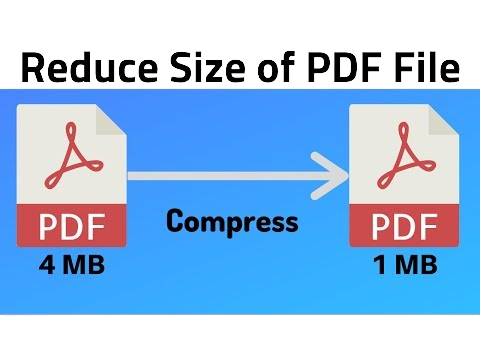Annual Growth Rate Calculator
Title: Understanding Annual Growth Rate and Its Importance in Business and Finance
Annual Growth Rate Calculator In the dynamic world of business and finance, understanding and analyzing performance trends is essential for making informed decisions. One such crucial metric is the Annual Growth Rate (AGR), which serves as a vital indicator of a company's or an economy's progress over time. This article aims to delve into the concept of AGR, its significance, and how it is calculated to empower businesses and investors in their decision-making processes.
Compound Annual Growth Rate Calculator
Defining Annual Growth Rate (AGR)
The Annual Growth Rate (AGR) is a metric used to measure the percentage change in a specific variable over a year. This variable can represent various aspects, such as revenue, sales, profit, population, or economic indicators like Gross Domestic Product (GDP). By analyzing AGR, businesses can assess the progress or decline of their key performance indicators, while economists gauge the economic health of a country.
Types of Annual Growth Rates
There are two primary types of Annual Growth Rates:
a. Simple Annual Growth Rate: This straightforward method calculates the percentage change from the initial value to the final value over a single year. The formula is as follows:
Simple AGR = ((Final Value - Initial Value) / Initial Value) * 100
b. Compound Annual Growth Rate (CAGR): CAGR is a more comprehensive metric that calculates the average annual growth rate of an investment or indicator over a specific period, considering the compounding effect. It is especially useful for assessing long-term growth. The formula for CAGR is as follows:
CAGR = (Final Value / Initial Value) ^ (1 / Number of Years) - 1 * 100
- Importance of AGR in Business
AGR holds significant importance in the world of business for various reasons:
a. Performance Evaluation: AGR provides a clear understanding of a company's or product's performance over time. By comparing AGRs for different periods, business owners can identify growth patterns and areas of improvement.
b. Investment Decisions: Investors use AGR to assess the growth potential of a company before making investment decisions. A consistently high AGR indicates a healthy and growing business, making it an attractive investment opportunity.
c. Strategic Planning: AGR plays a crucial role in formulating business strategies. It helps companies set realistic targets, allocate resources effectively, and plan for the future.
d. Competitor Analysis: By comparing AGRs with competitors, businesses can gauge their market position and identify potential threats or opportunities.
- Calculating AGR: Step-by-Step Guide
Calculating AGR involves a few straightforward steps:
Step 1: Determine the initial value: This represents the starting point for the calculation period. It could be the revenue, sales, or any other relevant metric.
Step 2: Determine the final value: This represents the ending point for the calculation period. It corresponds to the metric at the end of the year or the specified time frame.
Step 3: Choose the type of AGR: Decide whether to calculate the Simple AGR or the Compound Annual Growth Rate (CAGR) based on the specific requirement.
Step 4: Apply the appropriate formula: Use the formula for Simple AGR or CAGR, depending on the chosen type.
Step 5: Interpret the result: The final percentage value indicates the annual growth rate of the chosen metric. Positive values signify growth, while negative values indicate a decline.
- Understanding CAGR vs. Simple AGR
It's essential to comprehend the differences between CAGR and Simple AGR, as they serve distinct purposes:
a. Long-Term Growth Assessment: CAGR is preferred when analyzing long-term growth trends, as it smoothens out short-term fluctuations and focuses on the average annual growth.
b. Impact of Compounding: CAGR considers the effect of compounding over multiple periods, providing a more accurate representation of growth compared to Simple AGR.
c. Short-Term Analysis: For short-term assessments, Simple AGR may be more suitable, as it captures the percentage change over a single year without considering compounding.
d. Investor Perspective: Investors often look at CAGR to evaluate investment opportunities over an extended period.
- Practical Applications of AGR
AGR finds application across various fields, including:
a. Finance: In finance, AGR is used to assess the performance of investments, mutual funds, and other financial instruments over time.
b. Marketing: Marketers use AGR to evaluate the success of marketing campaigns, product launches, and customer acquisition strategies.
c. Economics: Economists use AGR to analyze economic indicators, such as GDP, inflation, and employment rates, to understand the overall economic growth or contraction.
d. Demographics: AGR is applied in demographic studies to track population growth, birth rates, and migration patterns.
e. Technology: Technology companies use AGR to monitor user growth, revenue expansion, and market share.
- Limitations and Considerations
While AGR is a valuable tool for analysis, it comes with certain limitations and considerations:
a. Short-Term Fluctuations: AGR may not fully capture short-term fluctuations, especially when dealing with highly volatile data.
b. External Factors: AGR does not account for external factors such as economic conditions, market trends, or changes in regulations, which can significantly impact growth rates.
c. Historical Performance: AGR is based on historical data and may not always predict future performance accurately.
d. Negative Growth: Calculating AGR can lead to misleading results if the initial value is zero or negative, making it crucial to interpret the results in context.
e. Selective Time Frames: Users must be cautious while choosing specific time frames for calculations, as the AGR can vary widely based on the chosen period.
Conclusion
The Annual Growth Rate (AGR) is a powerful metric that aids businesses and investors in assessing progress, setting targets, and making informed decisions. By understanding the different types of AGR and their applications, individuals can leverage this valuable tool to analyze performance and plan for the future. While AGR provides valuable insights, it should be used in conjunction with other performance indicators and factors to ensure a comprehensive evaluation of business and economic health.





.png)




